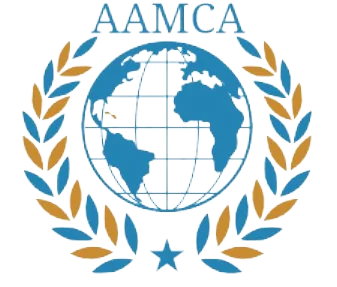Understanding the Role of Glaciers
Glaciers serve as vital components in the Earth’s hydrological cycle, acting as natural reservoirs that store freshwater. These immense ice masses accumulate over time, compressing and freezing fallen snow, and can hold more than 75% of the world’s freshwater supply. As glaciers gradually melt due to rising temperatures, they release water that sustains many rivers and lakes, which are crucial for drinking water, agriculture, and ecosystems. In regions such as the Himalayas, Andes, and the Alps, glacier-fed rivers support millions of people, directly influencing their access to potable water.
Moreover, glaciers play a critical role in maintaining the ecological balance. They support unique habitats for wildlife, and their meltwater nourishes various plant species essential for local biodiversity. As climate change accelerates the rate of glacier melting, the subsequent reduction in freshwater availability poses significant threats to both human populations and ecosystems. In many areas, this can lead to water scarcity, affecting agricultural output and food security, as farmers rely heavily on glacier-fed irrigation systems.
Glacier melt also impacts energy production. Hydropower, which accounts for a considerable percentage of the world’s electricity generation, often relies on consistent water flow from melting glaciers. As glaciers shrink, the unpredictability of water supply becomes more pronounced, potentially leading to energy shortages and increased reliance on fossil fuels. This shift further exacerbates environmental concerns, highlighting the interconnectedness of glacier conservation, freshwater availability, and sustainable development.
In light of these factors, understanding the myriad roles that glaciers play is essential for fostering awareness about their conservation. Protecting glaciers is not merely an environmental mandate; it is a necessity for ensuring the sustainable use of water resources that are critical for human survival and ecosystem health.
The Consequences of Climate Change on Glaciers
Climate change poses a significant threat to glaciers worldwide, with alarming rates of retreat observed across various geographic regions. The Himalayas, often referred to as the “Third Pole,” are particularly vulnerable, experiencing annual glacial melt that contributes to rising sea levels and affects millions dependent on glacial meltwater. Similarly, the Andes glaciers have been shrinking, impacting water supplies for agriculture and local communities in several South American countries. The Arctic region, characterized by its vast expanses of ice, is also witnessing unprecedented melting, which has far-reaching consequences for ecosystems and human populations alike.
The retreat of glaciers leads to several environmental challenges, including increased flooding. As glaciers melt at an accelerating pace, the immediate consequence is the formation of meltwater lakes. These lakes, if unstable, pose a threat of catastrophic flooding to nearby settlements. Such events can result in loss of life, property damage, and disruption of infrastructure. Additionally, glacier retreat affects the seasonal flow of rivers, which can lead to water shortages during critical agricultural periods, further exacerbating food insecurity in regions reliant on consistent water supplies.
The socio-political implications of diminishing glacial resources cannot be overlooked. As glaciers recede, competition for water resources intensifies between urban and rural populations, often leading to heightened tensions and conflict. Countries that rely on shared river systems—from those originating in the Himalayas to the Andes—face complex political challenges. The need for cooperative water management becomes increasingly critical, yet fraught with difficulty amid growing pressures from climate change. The realities of glacier retreat underscore the urgent necessity for comprehensive strategies to address both environmental and socio-political ramifications, as we navigate the complexities of a changing climate.
Global Commitments and Local Actions Toward Glacier Protection
In recent years, global awareness of the critical need for glacier conservation has led to a series of significant international agreements and initiatives aimed at protecting these vital water resources. Central to these commitments is the Pact for the Future, which outlines a roadmap for global cooperation in addressing climate change, including specific attention to the preservation of glaciers. This pact emphasizes the necessity for all nations to develop and implement robust Nationally Determined Contributions (NDCs), which are essential for limiting global temperature rises and mitigating the impact of climate change on vulnerable ecosystems, including glaciers.
The introduction of a special envoy for water further underscores the importance of dedicated leadership in addressing water management challenges associated with glacier loss. This envoy plays a pivotal role in convening discussions among stakeholders, mobilizing resources, and ensuring that glacier conservation remains a priority on the international agenda. Collaborative efforts, such as these, signify a collective understanding that glacier conservation is inextricably linked to sustainable water access for billions of people globally.
Moreover, addressing glacier preservation requires significant financial commitments, particularly for climate adaptation initiatives. Increased funding is essential to support local actions aimed at safeguarding glaciers and the communities that depend on them. Consequently, modifications to the international financial system have become imperative to facilitate direct funding for glacier conservation efforts. By prioritizing financing that supports adaptation strategies, nations can enhance their resilience against the adverse effects of climate change.
Collectively, these global commitments and local actions illustrate a multifaceted approach to glacier protection, highlighting that both policy-level initiatives and grassroots engagement are necessary for effective preservation efforts. As the world continues to grapple with climate change, the urgency for comprehensive and coordinated action in glacier conservation remains paramount.
Taking Action: A Call to Collective Responsibility
As the impacts of climate change accelerate, the urgency for collective responsibility in glacier conservation cannot be overstated. Glaciers are vital freshwater sources that provide millions of people with drinking water, agricultural irrigation, and hydroelectric energy. Their depletion threatens not only the ecosystems they support but also the livelihoods dependent on these crucial resources. Therefore, it is imperative that nations, communities, and individuals come together to take effective action for glacier preservation.
At the national level, governments play a vital role in establishing policies focused on environmental protection and climate adaptation. This includes investing in renewable energy, supporting sustainable agricultural practices, and establishing protected areas around glaciers. International collaboration is equally essential, as glaciers traverse national borders. Countries must work together to develop agreements that prioritize glacier conservation while ensuring equitable access to freshwater resources.
Communities can engage in various initiatives aimed at protecting glaciers and the environments surrounding them. Grassroots movements and local organizations can foster awareness about the implications of glacier retreat. Educational campaigns can inspire community members to adopt eco-friendly practices such as reducing waste, conserving water, and advocating for sustainable lifestyles. In addition, participation in local conservation projects helps individuals connect with their natural environment while actively contributing to glacier preservation.
On a personal level, individuals can have a significant impact through their daily choices. Simple actions, such as reducing carbon footprints, using energy-efficient appliances, and supporting sustainable products, collectively contribute to the larger goal of climate stability. By being informed advocates for conservation and engaging in discussions about glacier issues, individuals can challenge their communities to take additional steps towards stewardship of these essential resources.
In conclusion, the protection of glaciers is a shared responsibility that requires immediate and coordinated action across all levels of society. By uniting in this essential cause, we can strive to secure the integrity of glaciers, ensuring a sustainable future for all who depend on their vital freshwater resources.




